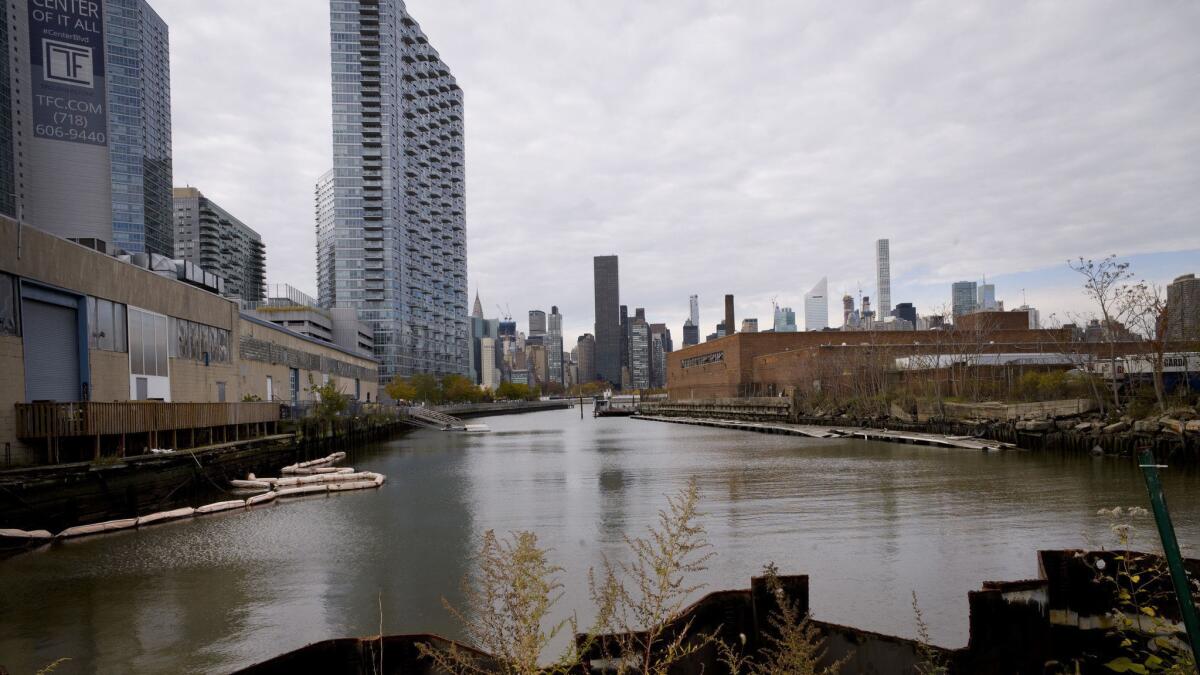Editorial: Amazon played American cities for suckers

- Share via
Over the 14-month “Bachelor”-like competition for Amazon’s second headquarters, more than 200 cities across the country went to embarrassing and expensive lengths to woo the online retailer. City leaders raced to hire consultants, compile data and draft elaborate proposals, offering ever more generous financial incentive packages, all in hopes of landing the promised $5-billion corporate office with 50,000 high-paying jobs.
Although Amazon may have flirted with mid-sized cities like Pittsburgh and Denver, and eyed Rust Belt resurgence in Indianapolis and Columbus, Ohio, the company ultimately picked two of the nation’s biggest metropolitan areas for its new corporate centers — New York City and Greater Washington, D.C. — with each landing half the jobs. The company managed to extract well more than $2 billion in financial incentives and tax breaks in the process. Whether those incentives pay off for taxpayers will depend in large measure on how well Amazon does in the coming years, and whether its success gets passed on to workers in the new offices.
In the end, did all that wooing really make a difference? Nah. It sure looks like Amazon used the “open bidding” process to play cities against each other so it could extract more financial incentives from a short list of locations the company was seriously considering for headquarters. The process generated some offers that certainly seemed irrationally exuberant; for example, Philadelphia and the state of Pennsylvania offered subsidies worth about half a billion dollars more than Amazon said it was going to invest in the new headquarters.
Why are financial incentives for Amazon even on the table?
Research has shown that companies typically choose their locations based on availability of skilled workers, infrastructure, business environment and the quality of life employees can expect. Tax breaks can sometimes make the difference between two similarly situated cities. But all the incentives in the world are not going to convince an Amazon-like behemoth to move to, say, Indiana, if it can’t attract the extremely-in-demand tech talent to work there.
Indeed, the company said as much. “We looked at what our employees want, and where they would want to live,” an Amazon executive said Tuesday at a news conference. The company ended up seeking two headquarters instead of one because no single city had enough tech workers to meet its hiring needs.
Amazon is one of the world’s biggest companies. It needs to expand and it has to do that in the few cities with large, highly skilled workforces — such as New York City and Washington. Google recently announced it was planning to expand its offices in New York to accommodate more than 20,000 workers — without subsidies. So why are financial incentives for Amazon even on the table? After all, Amazon had already decided to create the jobs; the only question was where it would put them.
To make matters worse, Amazon’s planned headquarters in New York’s Long Island City is in a newly designated “opportunity zone,” potentially eligible for tax breaks designed to increase investment in low-income communities. But the neighborhood has already gentrified — there are shiny new high-rises and the median income is $138,000 a year — meaning the arrival of the online retailer will be an additional boon to real estate investors, including possibly Amazon itself, according to the New York Times.
If a tax break goes to a company that would have moved in even without such a subsidy, then taxpayers have traded away money that could have been spent on education, infrastructure and other public services. Nor are such tax giveaways fair to existing businesses that pay their required share of taxes and rely on the services and infrastructure funded by those tax dollars. Worse, researchers have found that incentives are often poorly targeted and don’t deliver the promised benefits in terms of jobs and economic activity. That’s not economic development. It’s corporate welfare.
Enter the Fray: First takes on the news of the minute from L.A. Times Opinion »
Cities and states can’t continue this race to the bottom. They have to be more savvy when the next mega-company comes knocking for subsidies. Some academics have proposed a kind of armistice or interstate compact in which states collectively refuse to offer company-specific financial incentive packages.
That would make it harder for the next Amazon-like company to goad cities and states into offering bigger, pricier subsidies. States can compete with each other on other, more important factors — the quality of their education systems, housing costs, tax structures and the availability of skilled workers.
Amazon played the incentive game masterfully. Cities just got played.
Follow the Opinion section on Twitter @latimesopinion and Facebook
More to Read
A cure for the common opinion
Get thought-provoking perspectives with our weekly newsletter.
You may occasionally receive promotional content from the Los Angeles Times.










